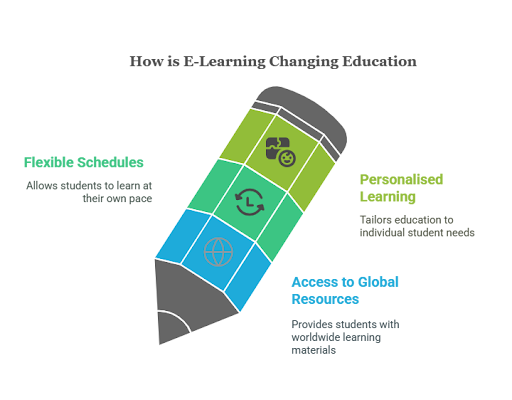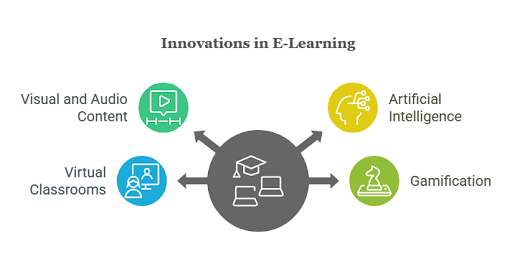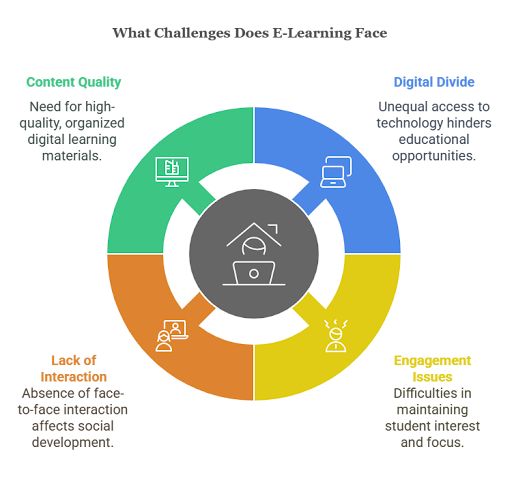SEO Purpose Tag
How is E-Learning Transforming the Education Sector?
By theclassofone / January 25, 2022
Educational institutions heavily rely on e-learning to operate effectively in modern times. Advanced technologies and expanding internet access have made online learning develop into an influential educational instrument that redesigns education. Online educational platforms entered the educational landscape as a permanent solution after students needed them during the COVID-19 pandemic. Schools throughout the world began using e-learning in education to maintain student education after physical facilities became unavailable. Online learning demonstrates a promising outlook since current progress changes our educational thinking patterns.
How is E-Learning Changing Education?
Traditional education practices have undergone dramatic changes because of electronic learning as an education method. Through remote access, students can now gain learning resources combined with remote classroom participation, which offers personalised flexibility to their learning process. The educational institutions maintained e-learning solutions to sustain educational programmes when they adopted the new pandemic protocols.
The growing number of people confined at home established e-learning in education
as the dominant instructional method. While developed as a pandemic emergency measure, electronic learning capabilities will persist beyond the COVID-19 crisis because they proved effective in education delivery.
E-learning in education brought permanent adjustments through the following main developments:

- Access to Global Resources: Students now gain access to worldwide resources because they no longer depend on textbooks or local libraries. Students gain access to thousands of international resources through online courses.
- Flexible Schedules: Due to e-learning, students can establish individual learning timetables which support their differing learning paces along with personal backgrounds.
- Personalised Learning: Artificial intelligence, together with adaptive technology, allows learning platforms to develop personalised learning pathways which match individual student needs.
What Are the Benefits of E-Learning?
Multiple benefits of e-learning make it an attractive educational approach for students and their instructors. Educational institutions that implement electronic learning gain access to the following primary advantages:

- Accessibility: E-learning in education provides students with extensive accessibility benefits that stand among its main advantages. The educational borders between urban and rural settings have melted because students now reach distant classes with resources that were previously inaccessible.
- Cost-effectiveness: E-learning in education decreases the expenses required for constructing traditional facilities, thereby producing cost-effective educational opportunities. E-learning education helps minimise transportation expenses, thus providing advantages to educational institutions and all their students.
- Engagement and Interactivity: Through its platform, e-learning provides students with interactive learning features, including quizzes, gamified modules, and active forum spaces that improve student participation in education.
- Variety of Learning Styles: Through e-learning in education, institutions provide content for all students who learn differently because they present information in textual, visual, and interactive formats. Students who learn according to their distinctive styles view information better and remember it longer because of this flexibility.
- Scalability: The technology delivers education to an unlimited number of students, no matter where they reside. The limitless capability of this platform entails the prospect of educational inclusion at a broad level.
How is Technology Enhancing E-Learning?
Technology functions as a vital component which improves the quality of e-learning delivery. Modern online tools have significantly advanced methods of delivering education, like:

- Visual and Audio Content: Student learning experiences refused revolutionary changes through visual alongside audio content elements, including videos, animations, and podcasts. Different student learning preferences meet their needs through the multimedia educational approach.
- Artificial Intelligence (AI): Educational tools which use Artificial Intelligence (AI) capabilities are now included in electronic learning platforms. Learning tools use artificial intelligence to analyse performance data so they can customise content delivery for each student.
- Virtual Classrooms: Electronic learning utilises video conferencing platforms, which provide students with virtual classrooms that duplicate traditional classroom contact.
- Gamification: Adding gamification concepts to electronic learning created an enjoyable learning experience that promotes friendly competition. Students gain motivation and better retention because the system rewards them with progress between levels.
What Challenges Does E-Learning Face?
Several obstacles block students from experiencing complete electronic learning effectiveness, like:

- Digital Divide: Not all students have the same access to technology, which prevents them from enjoying equivalent educational opportunities.
- Engagement Issues: Students face engagement difficulties while learning remotely when there is no physical classroom presence, especially when spending extended time studying remotely.
- Lack of Personal Interaction: The technology that bridges the distance between people cannot substitute for the authentic human connection and supportive environment that students receive from traditional schools. Learning students encounter difficulties when teachers and peers interact in person.
- Quality of Content: E-learning provides flexible learning opportunities, but its delivery needs high-quality, properly organised content material due to its limitations.
How Can E-Learning Become More Effective?
For e-learning in education to be more effective, several steps can be taken:
- Encourage Student Engagement: Educational institutions need to invest money into developing interactive content of high quality for student learning that remains both simple to understand and engaging at the same time.
- Improve Content Quality: E-learning platforms must include features for live discussions, together with group work and interactive exercises, because this improves student participation.
- Provide Technical Support: Institutions need to ensure their students obtain technical support for fixing technological problems, alongside getting help with using online educational tools.
- Ensure Access for All: All students deserve access to digital resources, and achieving this goal deserves primacy. Students must have both essential educational equipment and internet solutions to achieve an inclusive learning environment.
E-Learning is the Future of Education with The Class of One
At The Class of One, we believe that e-learning is not just a passing trend – it is the future of education. As technology continues to advance, its ability to transform the learning experience grows even stronger. This is an exciting time for students, educators, and institutions alike, as we embrace a new era of flexible, personalised, and accessible education.




